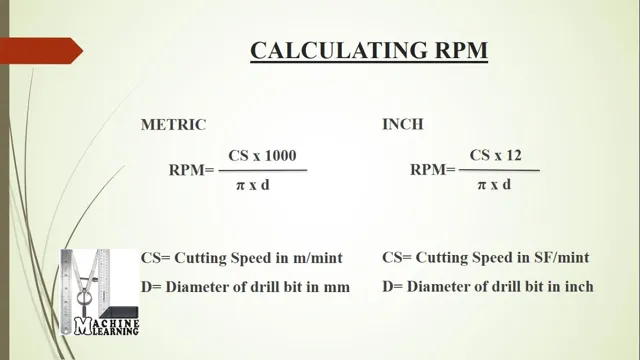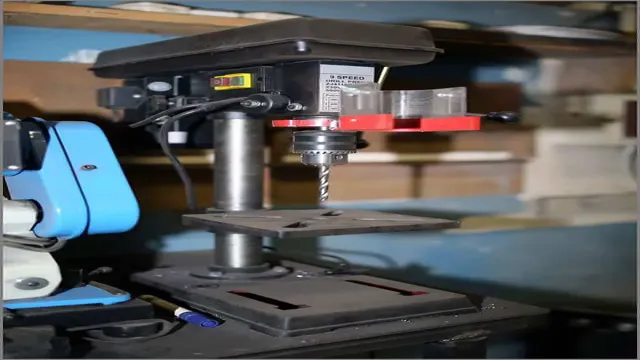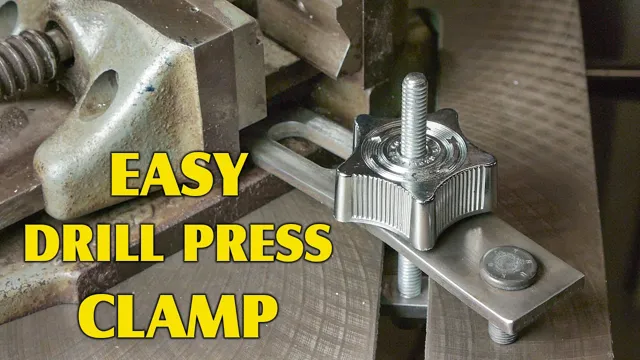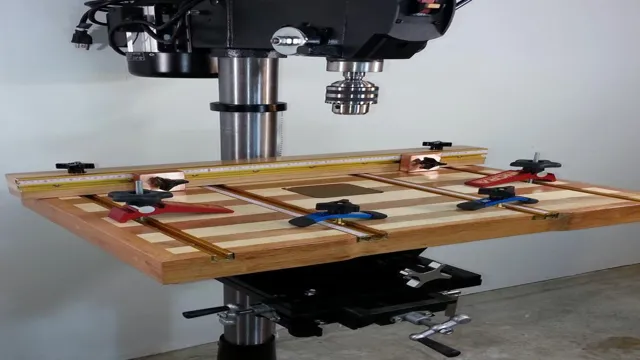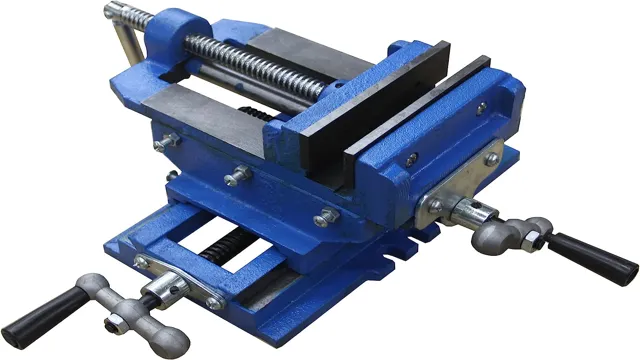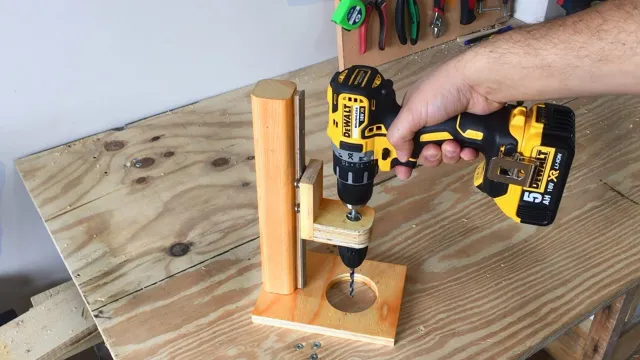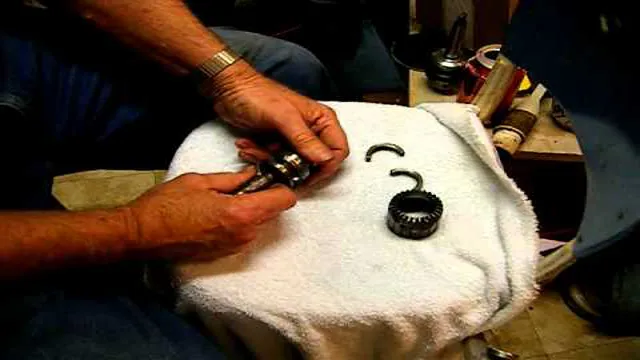How a Variable Speed Drill Press Works: A Comprehensive Guide
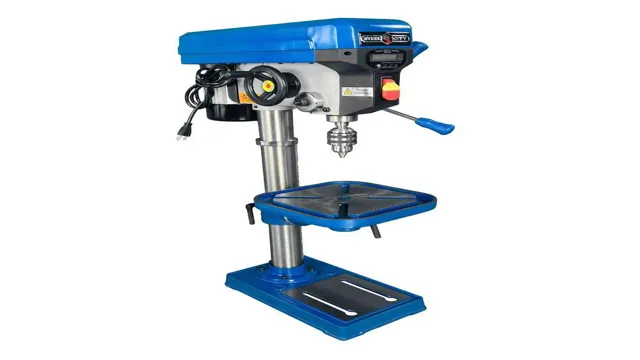
Speed is an important factor in the world of drilling machines. The faster you drill, the more work you can get done in a shorter amount of time. But what if your project requires varying speeds? This is where a variable speed drill press comes in.
This unique machine allows you to change the speed of the drill bit while it is in motion. It operates using a motor that is connected to a set of pulleys and belts that control the speed of the drill. Think of it like a car gearbox with multiple gears for different driving situations.
Whether you’re a professional woodworker or just a DIY enthusiast, a variable speed drill press can be a valuable tool in your arsenal. In this blog post, we’ll discuss how this innovative machine works and how it can help you achieve precise and efficient drilling results.
Overview
If you are wondering how a variable speed drill press works, then you’ve come to the right place! A variable speed drill press is a versatile tool designed to drill precise holes in a variety of materials. The variable speed feature allows the user to adjust the speed of the drill, making it perfect for working with different materials like wood, metal, and plastics. Essentially, a variable speed drill press has a motor that powers the drill bit while providing variable speed options through a multi-pulley system.
With this system, the operator can quickly and easily adjust the speed of the spindle to suit the application. This makes it possible to achieve precise drilling results, making the variable speed drill press an essential tool for DIY enthusiasts, woodworkers, mechanics, and more!
Understanding the Drill Press
A drill press is a versatile tool that has become an essential part of any workshop. It comes in different sizes and shapes, but the basic function remains the same; to drill holes in materials. The tool consists of a motor that drives a spindle, which holds a drill bit.
The drill press is an incredibly powerful tool that can drill through thick materials, make precise and accurate holes, and even cut threads. It can also be used to sand surfaces, polishing metals, and tapping holes. Its flexibility, precision, and safety make it an ideal tool for hobbyists and professionals alike.
With the right drill bit and proper guidance on how to use it, the drill press can make your drilling tasks more comfortable and more efficient.

The Use of a Variable Speed Drill Press
A variable speed drill press is a versatile tool that is essential for any workshop. It allows for precision drilling, making it a popular choice for craftsmen and DIY enthusiasts alike. The advantage of a variable speed drill press is that it allows you to adjust the drilling speed to match the material being drilled, ensuring a clean and accurate result.
The variable speed function also provides flexibility in the range of projects that can be completed. When using a variable speed drill press, it is important to use the correct drill bit and to match the speed to the material being worked on to avoid damage or breakage. Whether you are drilling into metal, wood, or other materials, a variable speed drill press is a valuable asset in any workspace.
So, if you want to improve your drilling accuracy and take your project to the next level, investing in a variable speed drill press is a smart choice.
Components and Mechanics
When you have a variable speed drill press in your workshop, you have a powerful tool that can drill into various materials with precision and control. But have you ever wondered how it works? The drill press is made up of several components that work together to provide the necessary force and speed to the drill bit. The motor is responsible for converting electrical energy into mechanical energy, which powers the spindle that holds the drill bit.
The speed of the spindle is controlled by the pulleys and belts system. By adjusting the position of the belt on different pulleys, you can change the speed of the drill bit. This allows you to drill into softer materials at a slower speed and harder materials at a faster speed.
Additionally, the depth stop and table provide accuracy and stability for your drilling projects. With all of these components and mechanics working together, a variable speed drill press is an impressive tool that can handle a wide range of drilling tasks with ease.
Motor and Control System
The motor and control system of a machine is a crucial part of its overall functionality. The components and mechanics of these systems are responsible for making sure that the machine is able to operate smoothly and efficiently. Some of the most important components of a motor and control system include the motor itself, as well as various sensors and other devices that are used to regulate its speed and power output.
Other important parts of the system include the gearbox, which is responsible for transferring power from the motor to the machine’s moving parts, as well as the control circuitry, which is used to program and regulate the machine’s overall operation. One of the most important aspects of any motor and control system is its reliability. Machines that are used in industrial settings need to be able to run 24/7 without any interruptions or breakdowns.
This means that the components and mechanics of the motor and control system must be carefully designed and engineered to ensure that they are able to withstand constant use and exposure to harsh operating conditions. Robustness and durability are critical attributes that manufacturers of such systems need to keep in mind. In order to maintain the smooth operation of a motor and control system, it is important to carry out regular maintenance.
This might involve cleaning and inspecting the various components of the system, including the motor, sensors, and control circuitry. It may also involve replacing worn or damaged parts, such as bearings or gears, to ensure that the system remains reliable over time. By doing so, this would ensure the machine remains efficient and remains operational without any unwanted disruptions.
Ultimately, the motor and control system is the backbone of any machine. Properly designed, engineered, and maintained, it can provide a consistent and reliable source of power to keep the machine running smoothly and efficiently, day after day, for years to come. Therefore, it is important to make sure that the components and mechanics of these systems are carefully selected and designed to ensure maximum robustness, durability, and reliability.
Pulleys and Belt Drive
When it comes to belt drive systems, pulleys play an essential role in the overall mechanics. A pulley is a wheel with a grooved rim that is designed to transmit power and motion between different parts of a machine, most commonly through the use of a belt. The belt wraps around the pulley, and as the pulley rotates, it transfers power to the connected parts.
The belt drive system, which comprises a belt and pulley combination, is a cost-effective and dependable solution for transmitting power. The pulleys are made of different materials and sizes, depending on the application and required load-carrying capacity. Belt drive systems are utilized in a range of industries, from automotive to manufacturing.
In addition to being cost-efficient, belt drive systems are also able to transmit power over long distances. When it comes to maintaining a pulley and belt drive system, maintenance is essential. Periodic inspection of the sheaves, belts, and bushings ensures that the drive remains free from damage that may hinder its performance.
Proper lubrication of the system is also critical for optimum efficiency. In summary, pulleys and belt drive systems are essential mechanical components used to transmit power and motion between parts of a machine.
Spindle and Chuck
The spindle and chuck are two essential components of a lathe, and they are responsible for holding and rotating the workpiece. The spindle is a rotating shaft that connects the chuck to the motor of the lathe. It is responsible for providing the rotational motion, and it’s also used for mounting different types of cutting tools.
The chuck, on the other hand, is attached to the spindle and can hold the workpiece firmly in place while it’s being machined. The chuck can be adjusted to grip different types and sizes of workpieces. The spindle and chuck work together to provide the necessary motion and support required for accurate and precise machining.
Without them, the lathe would not be able to function properly. In other words, the spindle and chuck are like the heart and lungs of the lathe, providing the essential functions required for the machine to operate smoothly, effectively, and purposefully. Overall, the spindle and chuck play vital roles in the mechanics and operation of the lathe, making them integral components in any machining process.
Benefits of a Variable Speed Drill Press
A variable speed drill press is a valuable tool that offers numerous benefits to users. It works by allowing the operator to adjust the speed of the drill bit based on the type of material being drilled. This is achieved by controlling the motor’s speed using a pulley system or electronic controls.
The ability to adjust the speed ensures a more precise and efficient drilling process. For example, when drilling through harder materials like metal, a slower speed is necessary to prevent overheating and breaking the bit. Conversely, when working with softer materials like wood, faster speeds are more appropriate to achieve a clean, smooth cut.
Furthermore, the variable speed feature enables users to tackle a variety of projects with just one tool, eliminating the need for multiple drills or bits. In summary, a variable speed drill press is a versatile and practical tool that improves precision, efficiency, and versatility in drilling operations.
Efficient and Precise Drilling
If you’re looking to up your drilling game, a variable speed drill press may be just what you need. These versatile devices offer a range of benefits that can help you achieve efficient and precise drilling every time. With a variable speed drill press, you can easily adjust the speed of the drill to suit the material you’re working with, whether it be wood, metal or any other substance.
This means you won’t have to worry about damaging your materials or producing shoddy work because you’re using the wrong speed. In addition, the precision of a drill press can help you create consistent and accurate holes for a variety of applications, from woodworking to metalworking and beyond. So if you’re serious about crafting high-quality workpieces, consider investing in a variable speed drill press that can help you achieve efficient and precise drilling every time.
Safety and Convenience Features
When it comes to drilling, safety and convenience are crucial factors to consider. This is where a variable speed drill press comes in handy. With this tool, you have the ability to adjust the speed of the drill according to your needs and the material you are working on, thus reducing the likelihood of accidents and ensuring that your work is precise.
Another advantage of a variable speed drill press is its ability to make the drilling process easier and more convenient. You can easily adjust the height of the table or the angle of the drill to accommodate different positions, which is essential to help reduce fatigue and strain on your body. Overall, a variable speed drill press is a powerful tool that provides numerous benefits, from safety and convenience to accuracy and efficiency.
So if you want to take your drilling experience to the next level, investing in a variable speed drill press is definitely worth considering.
Conclusion
In essence, a variable speed drill press is the multitasking master of all drilling tools. Just like a chameleon changes its colors to blend in with its environment, a variable speed drill press can seamlessly change its speed to adapt to the drilling material at hand. Whether you’re drilling through metal, wood, or even concrete, this nifty machine will adjust its speed accordingly, ensuring a precise and efficient drilling experience.
So if you want to unleash your inner handyman (or handywoman) and take your DIY projects to the next level, invest in a variable speed drill press and watch your drilling game reach new heights!”
FAQs
What is a variable speed drill press and how does it work?
A variable speed drill press is a machine that allows the user to change the drilling speed. This is achieved through an adjustable belt tension system or electronic control. The drill press also has a motor that powers the chuck and drill bit to drill through various materials.
What are the advantages of using a variable speed drill press?
The main advantage of using a variable speed drill press is that it allows the user to drill through different materials at the appropriate speed. This prevents damage to the material and the drill bit. Additionally, it gives the user greater control and precision over their drilling.
How do you adjust the speed on a variable speed drill press?
The method for adjusting the speed on a variable speed drill press varies depending on the model. Some use a tension belt system that requires the user to move the belt between different pulleys. Others have electronic controls where the user can set the speed using a digital display and buttons.
Can a variable speed drill press be used for other tasks besides drilling?
Yes, a variable speed drill press can be used for other tasks such as sanding, polishing, and tapping. This requires the use of different attachments and accessories.
Is a variable speed drill press more expensive than a standard drill press?
Yes, a variable speed drill press is more expensive than a standard drill press due to the additional features and electronics required for variable speed control.
How accurate is a variable speed drill press?
The accuracy of a variable speed drill press depends on the model and user skill level. However, it generally provides greater accuracy compared to using a handheld drill.
What safety measures should be taken when using a variable speed drill press?
Safety measures include wearing eye and ear protection, securing the workpiece properly, and using the appropriate cutting tool and speed for the material. Additionally, read and follow the manufacturer’s instructions and warnings.

